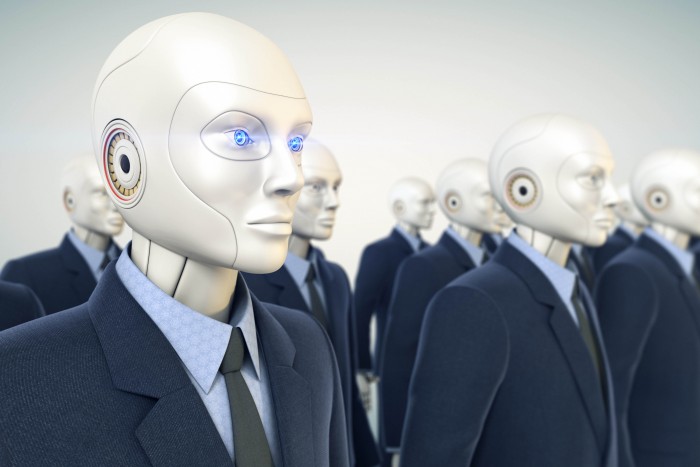
When Dubai Police announced that ‘robocops’ would patrol the emirate’s streets by May, many could have been forgiven for thinking their launch date was ambitious at best. Doubters have been proven wrong.
One of the world’s most up-and-coming cities now has its own IoT and AI-equipped machine mascot that can detect emotions, communicate in six languages and use facial recognition software to help police officers identify and catch offenders.
Dubai Police isn’t stopping there. It has also pledged to have a smart police station – which won’t need human officers – by 2030.
Invariably, government technology strategy in the UAE has a way of not only filtering down to the private sector, but driving its change. This Robocop, meanwhile, will inspire envy across swathes of CEO’s and CIO’s in the UAE and the GCC. Whether more robo-employees’ introduction into the enterprise is realistic in the short-term, however, is a different matter. Gartner estimates that by 2025, one-third of jobs will be replaced by robots and smart machines, and that prediction will inspire both feelings of excitement and trepidation in different sectors of the working population.
Whether or not one is able to have a dispassionate attitude towards the rise of robots in the workplace, their potential benefits to the enterprise are undeniable. Necip Ozyucel, Microsoft Gulf’s cloud and enterprise business solutions lead, believes that the decision to collaborate with robots has the potential to provide unprecedented levels of insight. “There is a great opportunity for humans to work with machines,” he says. “As machine co-workers grow increasingly competent, human-to-machine collaboration technologies will make organisations more intelligent and greatly improve overall human work performance to drive greater business value.”
Autodesk thought leader and evangelist Dominic Thasarathar agrees that, in the short-term, a collaborative approach will increase safety, as well as elevating intelligence behind the scenes within an organisation. “What we’re starting to see now is two things,” he says. “The first is the notion of humans and robots working in collaboration and the great opportunity it has – which is to free people up from doing dangerous, risky activities. Secondly, we are starting to see robots being developed with artificial intelligence that enable them to add more valuable work – not just doing simple, repetitive tasks, but learning and adapting to environments.”
Research from The University of Oxford and Citi revealed that a staggering portion of jobs are at risk of being automated – 47 percent of those in the US, 77 percent of those in China and 85 percent of those in Ethiopia. A glance at the disparities in these figures proves that only certain industries stand to be affected – at least for now. However, one thing is for certain: their introduction will cut across all levels of society. The oft-discussed ‘Industry 4.0’ trend may just be the tip of the iceberg when it comes to where robots will have an impact.
Thasarathar believes that while robots may not necessarily muscle out traditional workers, there are certain industries which will be prime targets for disruption. “At present, we are starting to see humans and robots work in collaboration to take up tasks – whether that’s repetitive manufacturing tasks under the guidance of humans, or more dangerous tasks like the inspection of hazardous areas,” he says.
Ozyucel believes that several industries are already beginning to feel the effects of automation and robotics. “The industries most impacted by artificial intelligence are healthcare, manufacturing, transportation, finance and customer services,” he says. “Major medical and pharmaceutical companies are already harnessing the power of artificial intelligence with great results. For example, numerous robots are in different stages of testing for diagnosing diseases, as in some cases these machines have a higher accuracy rate for diagnoses than human doctors. The manufacturing industry is one of the first industries to harness the power of AI by using robots. These robots have been used for assembling and packaging products, and in the future, this will be taken to another level, to assembling more complicated items such as electronics or cars. Even though many AI-driven production lines will still need human support and supervision, the future outlook points towards a largely robotic manufacturing industry.”
It’s not just physical labour-intensive jobs that will feel the effects of robotics. Jobs that involve large amounts of number-crunching and data analysis are likely to be disrupted by the introduction of efficient machines. “In the finance sector, increasing amounts of financial data has compelled many companies to seek the assistance of artificial intelligence to keep up with demand,” Ozyucel adds. “Robots can use predictive systems and market data to forecast stock trends and manage finances, often much quicker than their human counterparts.”
However, while the introduction of robots into the enterprise may carry a degree of inevitability, whether or not that necessarily means humans will be doomed to unemployment is a different question. There’s no denying that large numbers of the world’s population view the introduction of robots as a genuine threat, but Thasarathar believes that humans will inevitably adapt to their arrival. “It is not so much a case of employee replacement, but more about augmentation,” he says. “When you look back through history, when technology has disrupted the workforce, there has inevitably always been a greater demand for new types of skills on the back of that technology coming in. This is going to be a self-fulfilling prophecy.”
Ozyucel offers a slightly harsher forecast, but believes that opportunities will undoubtedly arise when machines become more prevalent. “Automation, both in the form of mechanised robots, as well as artificially intelligent software programs, is predicted to get rid of a huge number of jobs over the next five years,” he says. “Intelligent robots are not predicted to handle specific human relation interaction, and will therefore become tools in serving and supporting humans in their tasks. Smart machines don’t necessarily equal ‘unemployment’ but rather posit that technology will simply create different kinds of work.”





